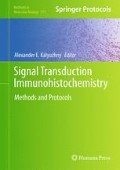Abstract
Psychiatric disorders including anxiety, depression, and addiction are both precipitated and exacerbated by severe or chronic stress exposure. While acutely, stress responses are adaptive, repeated exposure to stress can dysregulate the brain in such a way as to predispose the organism to both physiological and mental illness. Understanding the neuronal chemicals, cell types, and circuits involved in both normal and pathological stress responses are essential in developing new therapeutics for psychiatric diseases. Varying degrees of stressor exposure cause the release of a constellation of chemicals, including neuropeptides such as dynorphin. Neuropeptidergic release can be very difficult to directly measure with adequate spatial and temporal resolution. Moreover, the downstream consequences following release and receptor binding are numerous and also difficult to measure with cellular resolution. Following repeated stressor exposure, dynorphin is released, binds to the kappa opioid receptor (KOR), and causes activation of KOR. Agonist-activated KOR becomes a substrate for G protein receptor kinase (GRK), which phosphorylates the Ser369 residue at the C-terminal tail of the receptor in the first step in the β-Arrestin-dependent desensitization cascade. Through the use of phospho-selective antibodies developed and validated in the laboratory, we have the tools, to assess with fine cellular resolution, the strength of behavioral stimulus required for release, time course of the release, and regional location of release. We have gone on to show that following KOR activation, both ERK 1/2 and p38 MAP kinase phosphorylation are increased through use of commercially available phospho-selective antibodies. Finally, we have identified that one effector of KOR/p38MAP kinase is KIR 3.1 and have developed a phospho-selective antibody against the Y12 motif of this channel. Much like KOR and p38 MAP kinase, phosphorylation of this potassium channel increases following repeated stress. The following chapter discusses immunohistochemical and quantification methods used for phospho-selective antibodies used in various brain regions following behavioral manipulations.
Access this chapter
Tax calculation will be finalised at checkout
Purchases are for personal use only
References
Bruchas, M. R., Land, B. B., Aita, M., Xu, M., Barot, S. K., Li, S., and Chavkin, C. (2007) Stress-induced p38 mitogen-activated protein kinase activation mediates kappa-opioid-dependent dysphoria. J. Neurosci. 27, 11614–11623.
Bruchas, M. R., Xu, M., and Chavkin, C. (2008) Repeated swim stress induces kappa opioid-mediated activation of extracellular signal-regulated kinase 1/2. Neuroreport 19, 1417–1422.
Thomas, G. M., and Huganir, R. L. (2004) MAPK cascade signalling and synaptic plasticity. Nat. Rev. Neurosci. 5, 173–83.
Bardo, M. T., and Bevins, R. A. (2000) Conditioned place preference: what does it add to our preclinical understanding of drug reward? Psychopharmacology (Berl) 153, 31–43.
Bolshakov, V. Y., Carboni, L., Cobb, M. H., Siegelbaum, S. A., and Belardetti, F. (2000) Dual MAP kinase pathways mediate opposing forms of long-term plasticity at CA3-CA1 synapses. Nat. Neurosci. 3, 1107–1112.
Bruchas, M. R., Macey, T. A., Lowe, J. D., and Chavkin, C. (2006) Kappa opioid receptor activation of p38 MAPK is GRK3- and arrestin-dependent in neurons and astrocytes. J. Biol. Chem. 281, 18081–18089.
Land, B. B., Bruchas, M. R., Schattauer, S., Giardino, W. J., Aita, M., Messinger, D., et al. (2009) Activation of the kappa opioid receptor in the dorsal raphe nucleus mediates the aversive effects of stress and reinstates drug seeking. Proc. Natl. Acad. Sci. U S A 106, 19168–19173.
McLaughlin, J. P., Xu, M., Mackie, K., and Chavkin, C. (2003) Phosphorylation of a carboxyl-terminal serine within the kappa-opioid receptor produces desensitization and internalization. J. Biol. Chem. 278, 34631–34640.
Ippolito, D. L., Xu, M., Bruchas, M. R., Wickman, K., and Chavkin, C. (2005) Tyrosine phosphorylation of K(ir)3.1 in spinal cord is induced by acute inflammation, chronic neuropathic pain, and behavioral stress. J. Biol. Chem. 280, 41683–41693.
Clayton, C. C., Bruchas, M. R., Lee, M. L., and Chavkin, C. (2010) Phosphorylation of the mu-opioid receptor at tyrosine 166 (Tyr3.51) in the DRY motif reduces agonist efficacy. Mol. Pharmacol. 77, 339–347.
Ippolito, D. L., Temkin, P. A., Rogalski, S. L., and Chavkin, C. (2002) N-terminal tyrosine residues within the potassium channel Kir3 modulate GTPase activity of Galphai. J. Biol. Chem. 277, 32692–32696.
Bausch, S. B., Patterson, T. A., Appleyard, S. M., and Chavkin, C. (1995) Immunocytochemical localization of delta opioid receptors in mouse brain. J. Chem. Neuroanat. 8, 175–189.
Pan, Z., Kao, T., Horvath, Z., Lemos, J., Sul, J. Y., Cranstoun, S. D., et al. (2006) A common ankyrin-G-based mechanism retains KCNQ and NaV channels at electrically active domains of the axon. J. Neurosci. 26, 2599–25613.
Author information
Authors and Affiliations
Corresponding author
Editor information
Editors and Affiliations
Rights and permissions
Copyright information
© 2011 Springer Science+Business Media, LLC
About this protocol
Cite this protocol
Lemos, J.C., Roth, C.A., Chavkin, C. (2011). Signaling Events Initiated by Kappa Opioid Receptor Activation: Quantification and Immunocolocalization Using Phospho-Selective KOR, p38 MAPK, and KIR 3.1 Antibodies. In: Kalyuzhny, A. (eds) Signal Transduction Immunohistochemistry. Methods in Molecular Biology, vol 717. Humana Press. https://doi.org/10.1007/978-1-61779-024-9_11
Download citation
DOI: https://doi.org/10.1007/978-1-61779-024-9_11
Published:
Publisher Name: Humana Press
Print ISBN: 978-1-61779-023-2
Online ISBN: 978-1-61779-024-9
eBook Packages: Springer Protocols

